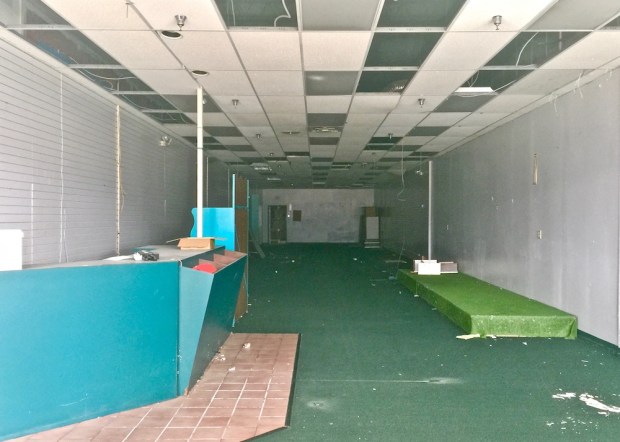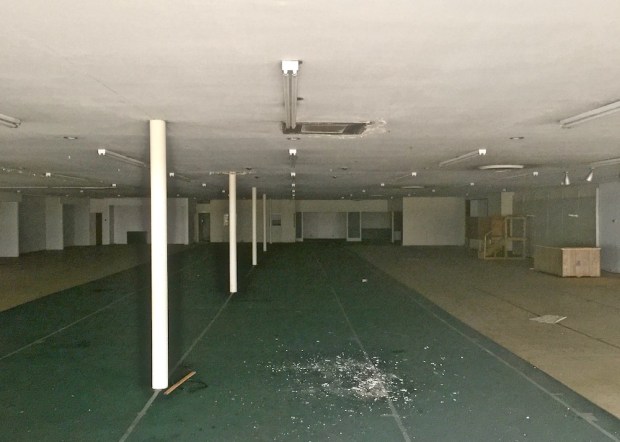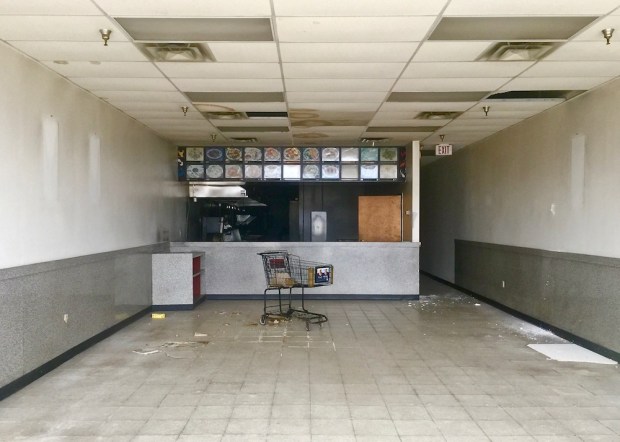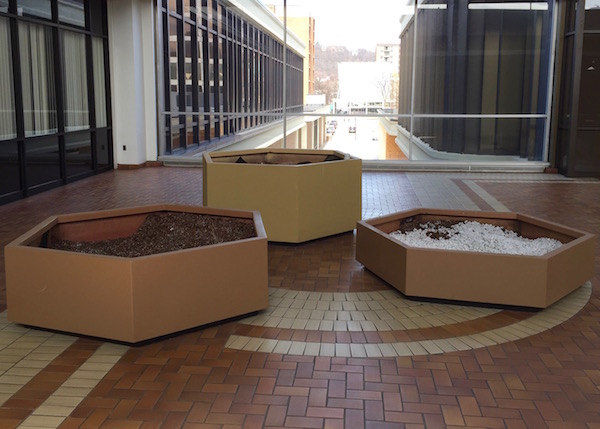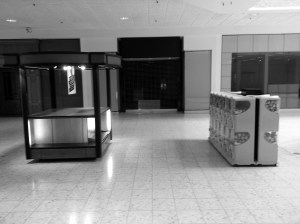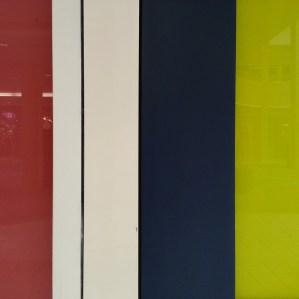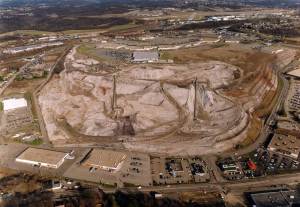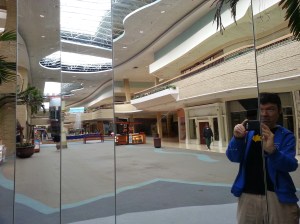Monroeville Mall is largely populated—if suffering the same economic woes as many of its peers—and sits right there on a couple hundred acres of the eponymous suburb’s most automobile-oriented real estate. The shopping center hosts more than a hundred retail establishments, a separate adjunct strip mall, and has its own encircling beltway, just like the small city it is.
Macy’s department store anchors one end of the mall; Dick’s Sporting Goods the other. In between, you’ll find LaButiq Lash Studio, Xtreme Teeth Whitening, Banter by Piercing Pagoda, Auntie Anne’s Hand-Rolled Soft Pretzel, four recruiting offices for the United States Armed Forces—one for each branch of the military—plus Up$cale Beauty, Up$cale Juice Bar, and Up$cale Kids.
Wander to the far west end of Monroeville Mall’s upper level, right next to Hot Stone Massage, and there’s another storefront with the same extended wood and glass treatment you’ll see at Klexo’s Tattoo Studio or Smoke Wizard and Vape. From the mall’s wide walkway, it looks like yet another apparel and gift shop with its prominently-displayed t-shirts, hoodies, books, and novelties.
This one’s different, though. For eight dollars, a cashier will grant the curious entry to an unexpected collection of movie memorabilia and replica models, disfigured mannequins and The Maul of Fame, a singular wall of hand prints and signatures from various horror film demi-celebrities, each one blood red. This is The Living Dead Museum.
You’ve heard the term dead mall—heck, you heard it right here—but ain’t no dead mall like an undead mall and this one’s stocked with ghouls, zombies, and The Evil Dead.
George Romero—the Orson Welles of gore—came to Monroeville Mall late in 1977. He wasn’t there to do his Christmas shopping. That winter, he started filming Dawn of the Dead, the zombie apocalypse masterpiece and lineal descendant of his Night of the Living Dead, the mother-of-all undead movies.
From this history, Monroeville Mall holds a special place for horror film fans long before The Living Dead Museum. Its starring role in Dawn of the Dead makes the mall hallowed ground for gore buffs and the entire structure a kind of living museum all on its own. There’s even a brass bust of George Romero on the mall’s lower level, in front of Pittsburgh Locker Room by Lids, to celebrate it.
So The Living Dead Museum ended up at Monroeville Mall by no accident and it celebrates Dawn of the Dead every way it can. There are props from the original film and movie posters from both its American version and Zombi, producer Dario Argento’s separate cut of the same movie for the European market.
Your author is ashamed to admit he hasn’t seen most of the films celebrated in the displays at The Living Dead Museum. Why, I don’t even know The Evil Dead from The Evil Dead 2! So the giant rustic woodshed from the former was indistinguishable from the various window sashes, shutters, door jambs, and fake boulders of the latter. The significance of “prop-alike” tape recorders and calligraphy from The Necronomicon was lost on me—but I’m sure The Orbit’s gore-enthused readership would enjoy them all.
Monroeville Mall even gets its own snake-eating-its-tail tribute at The Living Dead Museum. There is a defunct/replaced elevator car and a section of escalator from the period when the movie was made. The gift shop sells tote bags and t-shirts with the mall’s original uber-mod MM logo, c. 1969—with and without blood spatter.
It’s entirely subjective of course, but The Living Dead Museum’s most exciting display is a large, hand-made model of sections of Monroeville Mall as it existed in the late 1970s. Presumably built in pre-production for the movie—there is sadly no documentation on who created the model or how it was used—the piece reads like an incredible work of folk art.
Created from poster board, balsa wood, repurposed bamboo placemats, and advertising photos, the model provides an exciting window into both what Monroeville Mall looked like in 1977—originally there was an ice rink, later replaced by the food court; Carlton’s Mens Shop included the faux street lamps of mall shops of that era—and how low-budget movie-making worked at the time. It’s hard to imagine the production designers for Jaws or Star Wars cutting pictures from a Sears catalog to propose set ideas … but, maybe?
Calling itself a museum is a little bit of a stretch. The Living Dead Museum has a number of really great artifacts, but I could imagine hardcore fans being disappointed by the limits of the collection. As with the mall model, the collection is extremely light on description of either the items presented or the films they came from.
The Night of the Living Dead room, for example, has plenty of promo stills, posters, and news clippings, but for actual objects from the movie, visitors get to see Sheriff McClelland’s ammo belt and some production lights used for scenes inside the farmhouse.
Many of the other displays include “prop-alikes.” I couldn’t find an official definition for this term, but I assume it means an object not used in a film, but one that looks just like the prop. There are quite a number of replica/recreation/tribute figures which are cool, but feel a little like the house that went all-in on Halloween.
All that said, for this horror noob, fair-weather fan, and general curiosity-seeker, The Living Dead Museum was a legit hoot. There is plenty to goo-ga over, even if you haven’t seen the movies the displays reference. It’s also a nice bite-sized experience that won’t wear you out, take up your whole afternoon, or break the bank.
The creators of The Living Dead Museum clearly put their blood and guts—and the blood of plenty others too—into an experience custom made for zombies, and those who love them. This Halloween season—or any season—we highly recommend a visit.

See also: “Neighbor of the Living Dead [or] I Was a Teenage Zombie,” The Orbit’s 2017 story on Night of the Living Dead actor and “teenage zombie” John Kirch who sadly passed away late last year.















